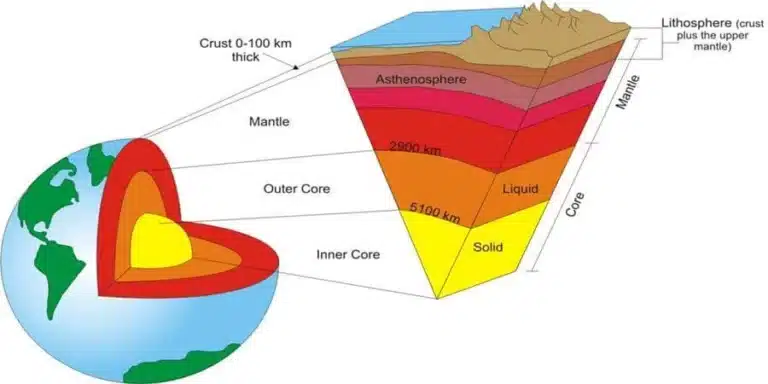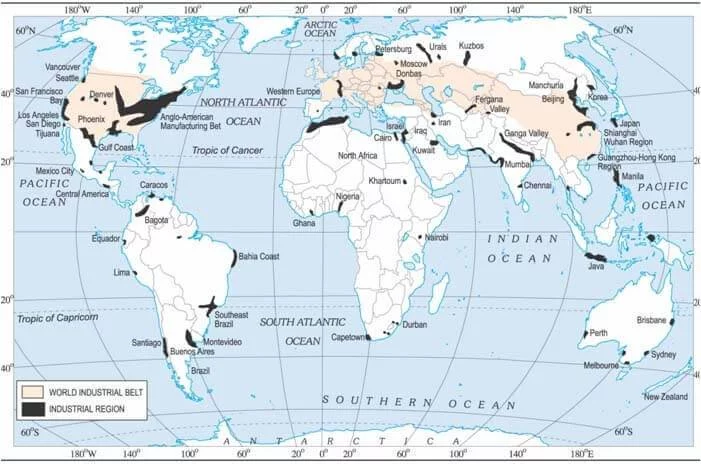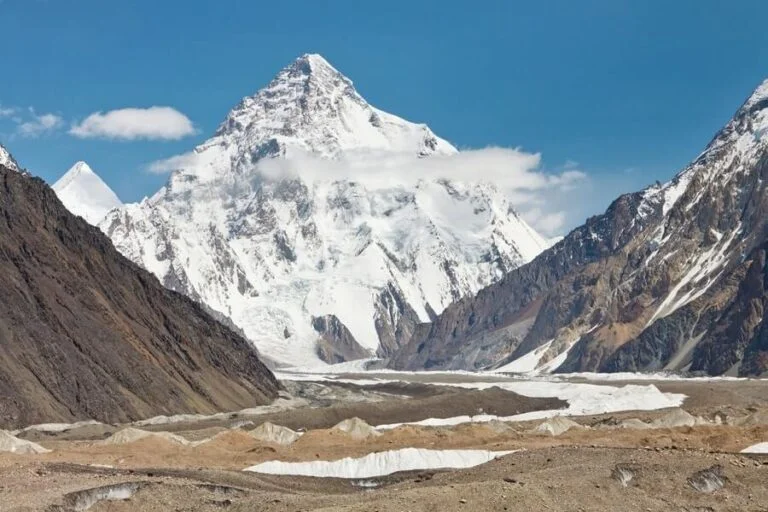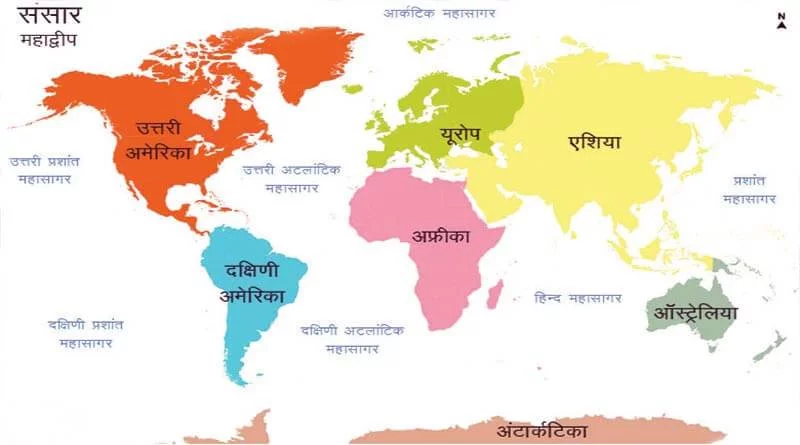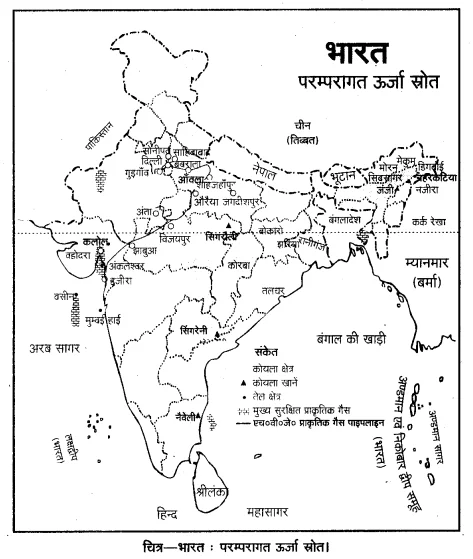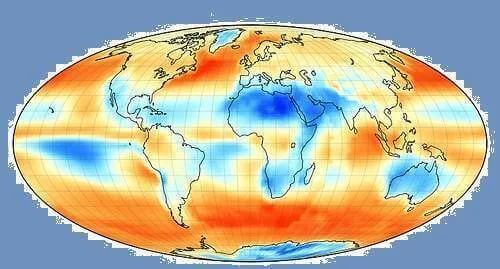The internal structure of earth | diagram of structure of earth
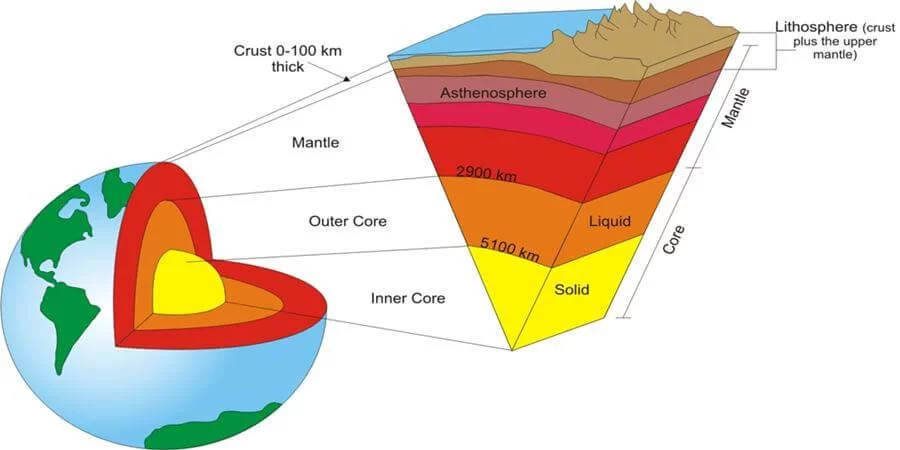
Structure of earth | Crust
- It Is The Topmost Layer Of The Earth With An Average Depth Of 33 Km.
- Its Thickness In The Continental Parts Is About 40 Km While The Thickness Of The Oceanic Crust Is 5-10 Km.
- The Upper Part Of The Crust Is Made Up Of Sedimentary Rocks.
- The Continental Crust Is Made Up Of Granite Rocks While The Oceanic Crust Is Made Up Of Basalt.
- The Upper Crust Is Mainly Composed Of Silica And Aluminum And Has An Average Density Of 2.7. This Part Is Called Sial (Silica+Aluminium).
- Silica And Magnesium Predominate In The Lower Crust. It Consists Of Basalt Rocks. This Is Also Called The ‘Boundary’ (Silica + Magnesium) Layer. Its Average Density Is 3 G/Cm.
- There Is A Lighter Layer Than The Sial Border.
- Thus Siel Is Floating Above The Limit.
- It Is Also Called Lithosphere And Has Two Parts – Outer Crust And Inner Crust.
Structure of earth | Mantle
- Its Depth Is About 2900 Km.
- The Mantle Represents 83% Of The Total Volume Of The Earth And 63% Of The Total Mass.
- The Mantle Is Also Divided Into Two Parts – The Upper Mantle Is Called The Asthenosphere, Which Extends Up To 400 Km, Which Is The Main Source Of Magma.
- Its Density Is Greater Than That Of The Crust (3.4 G/Cm’).
- The Combined Part Of The Crust And Upper Mantle Is Called The Lithosphere.
- It Is Mainly Extended Up To 10-200 Km.
- Below 100 Km And Up To A Depth Of 200 Km, The Material Is In A Molten State Where The Velocity Of Seismic Waves Decreases.
- This Region Is Called The ‘Division Of Low Speed’.
- The Mantle Is Composed Mostly Of Silicate Minerals, In Which Iron And Magnesium Predominate.
Structure of earth | Core
- The Inner Part Of The Earth Below The Mantle Is Called The Core.
- It Is Mainly Composed Of Nickel And Iron, Hence It Is Called NiFe (Ni + Fe).
- The Core Is Divided Into Two Parts – The Inner Core And The Outer Core. The Outer Core Extends From 2900 Km To 5150 Km.
- It Is In Liquid State. The Part From 5150 Km To The Center Of The Earth Is Called The Inner Core.
- It Is In A Solid State Under Extreme Pressure.
- The Density And Temperature Of The Core Are 13 G/Cm And 5500°C Respectively. Is.
- Temperature Increases With Depth In The Earth. It Has Been Proved By Applications That At Every Depth Of 32 Meters, There Is An Increase In Temperature By 1°C. Of Increase.
- Due To The Increase In Temperature, All The Substances In The Core Should Have Been In A Molten State, But With Depth The Pressure Increases So Much That The Melting Point Of The Substances Becomes Very High.
- Hence The Material Of The Core Is In Solid State.
- In The Outer Core, Where There Is Relatively Little Pressure, The Substances Are In A Liquid State.
| Element | Burden (%) |
|---|---|
| Oxygen | 46.6 |
| Silicone | 27.72 |
| Aluminum | 8.13 |
| Iron | 5.00 |
| Calcium | 3.63 |
| Sodium | 2.83 |
| Magnesium | 2.09 |
| Other | 1.41 |
| Element | Burden (%) |
|---|---|
| Oxygen | 30 |
| Silicone | 15 |
| Aluminum | 1.1 |
| Iron | 35 |
| Calcium | 1.1 |
| Magnesium | 13 |
| Nickel | 2.4 |
| Sulphur | 1.9 |
5/5 - (1 vote)

